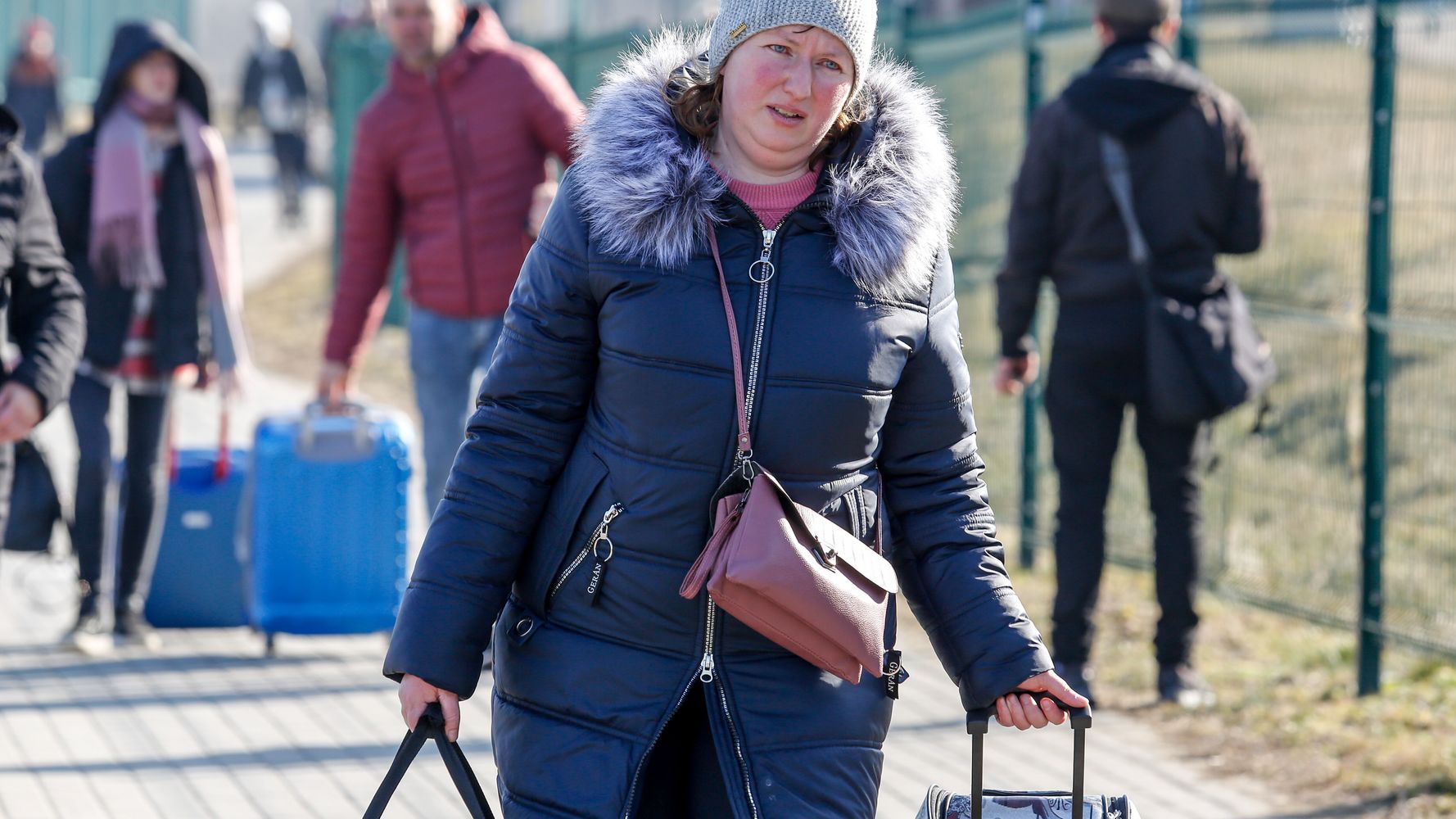
As Russia escalates its invasion of Ukraine, bombardment, shelling and street-to-street military operations are transforming the lives of millions of Ukrainians, and thousands are fleeing the country. International aid groups and foreign governments are rushing to address what could become Europe’s worst humanitarian crisis in decades.
Supporters of the Ukrainians have been preparing to help for weeks as Russian troops have amassed along Ukraine’s borders ― but it’s impossible for them to know exactly how desperate the situation will become, what resources they will need and how their ability to help may be limited.
Advertisement
“We already know from the 2014 incursion what the in-demand services are for people that are displaced … receiving them at bus and train stations, providing information and referrals for things like where the closest pharmacy is, and providing a meal and a place to rest,” said Britton Buckner of the group Catholic Relief Services, which works with a network of Catholic charities called Caritas. “Coordinating with local governments and finding gaps has been taking place … In parallel, we’re also doing robust volunteer mobilization in 3,500 parishes.”
Russia began intervening in neighboring Ukraine in 2014 by supporting separatist fighters, who took over parts of the country’s east and fought Ukrainian government forces backed by the U.S. and Western nations. Before the 2022 invasion, that conflict had already killed more than 13,000 people and displaced nearly a million.
“The situation now is very fluid … The initial phase of displacement is people who have the means to move. As the situation unfolds, we will see where the safe havens are” for others who are forced to leave home, Buckner said. She noted that within Ukraine, cash and fuel are already in short supply and many shops are running low on goods.
At Ukraine’s border with Romania, Buckner saw people coming across by foot and in taxis on the first day of the Russian assault, and in Moldova, her organization helped some families who were able to arrive by air before Ukraine ended commercial flights.
Advertisement
On Saturday, United Nations refugee chief Filippo Grandi said more than 150,000 Ukrainians had now entered those two countries and neighboring Poland and Hungary. “Displacement in Ukraine is also growing but the military situation makes it difficult to estimate numbers and provide aid,” Grandi tweeted.
European leaders say they are ready and willing to shelter Ukrainians. In nations like Romania, Ukrainians can count on minority Ukrainian populations who share their language and may be especially keen to help, Buckner said. And some countries are unveiling new programs for the refugees: Slovakian official Livia Vasakova said her country will offer a special status that includes free health care, public transport and the legal right to work, for example.
Russia’s recent pressure against its neighbors has given relief groups on the continent experience in helping not just Ukrainians but others ― like people fleeing Belarus, whose Russian-backed ruler cracked down on his population in 2020 and 2021, Jonathan Katz, a former official at the U.S. Agency for International Development, told HuffPost.
“There would be an expectation, from the European Union aid mechanisms to U.S. and international systems, that… help would be needed,” said Katz, who is now with the German Marshall Fund, a think tank.
Advertisement
The Biden administration has directed American troops in Poland to help open refugee processing centers, and has sent disaster specialists to the country. The White House is also asking Congress to approve $2.9 billion in funding for emergency humanitarian assistance for Ukraine ― a step that experts say is important because there are so many other global crises that the U.S. has already committed to addressing.
Some commentators have noted there’s a stark difference between the broad solidarity being shown to Ukrainians and the xenophobia and resistance that European governments like Hungary and Poland displayed toward people displaced by other conflicts, like the Syrian civil war.
Inside Ukraine, the ongoing fighting and broader disruption are making life harder for Ukrainians as they struggle to keep their country independent. Doctors Without Borders has suspended its operations, and other aid groups are wary of getting caught in the crossfire, particularly since U.S. intelligence suggests Russia will target prominent figures in civil society to try to weaken Ukraine.
Buckner said her Ukrainians colleagues are “patriots” who are balancing their desire to be safe with their commitment to helping others.
“We’re all living with fears that there would be targeting of many kinds, but that’s one of the elements of a faith-based humanitarian organization: It’s really a cause, it’s really a calling,” she said. “That doesn’t make it easier, but it makes it more livable.”
Many Ukrainians have not yet received their salaries for the month of February, she noted, worsening the economic toll of the war. Analysts say the most important humanitarian assistance is cash, because trying to buy and ship food, for instance, incurs administrative costs and threatens already dysfunctional supply chains.
Meanwhile, thousands of families are facing the difficult decision of whether to separate or try to stay together. Ukraine is not allowing men between the ages of 18 and 60 to leave, saying they must stay to defend their nation.
It is widely expected that Russia’s assault will only become more brutal.
Despite Moscow’s claims that it is only attacking military targets, The New York Times verified an instance of a missile hitting a residential building in the Ukrainian capital of Kyiv, and on-the-ground reports say combat is taking place in civilian neighborhoods. Russian forces repeatedly hit civilians and facilities like hospitals in their recent offensive in Syria.
“I presume everyone understands we have not yet seen real war in Ukraine,” Artyom Lukin, an international relations scholar at the Far Eastern Federal University in Vladivostok, Russia, tweeted on Saturday. “It’s obvious the Russian military is under the order not to harm civilians and the infrastructure. Real war begins once this self-restraint is lifted. I fear to think what follows after this.”




